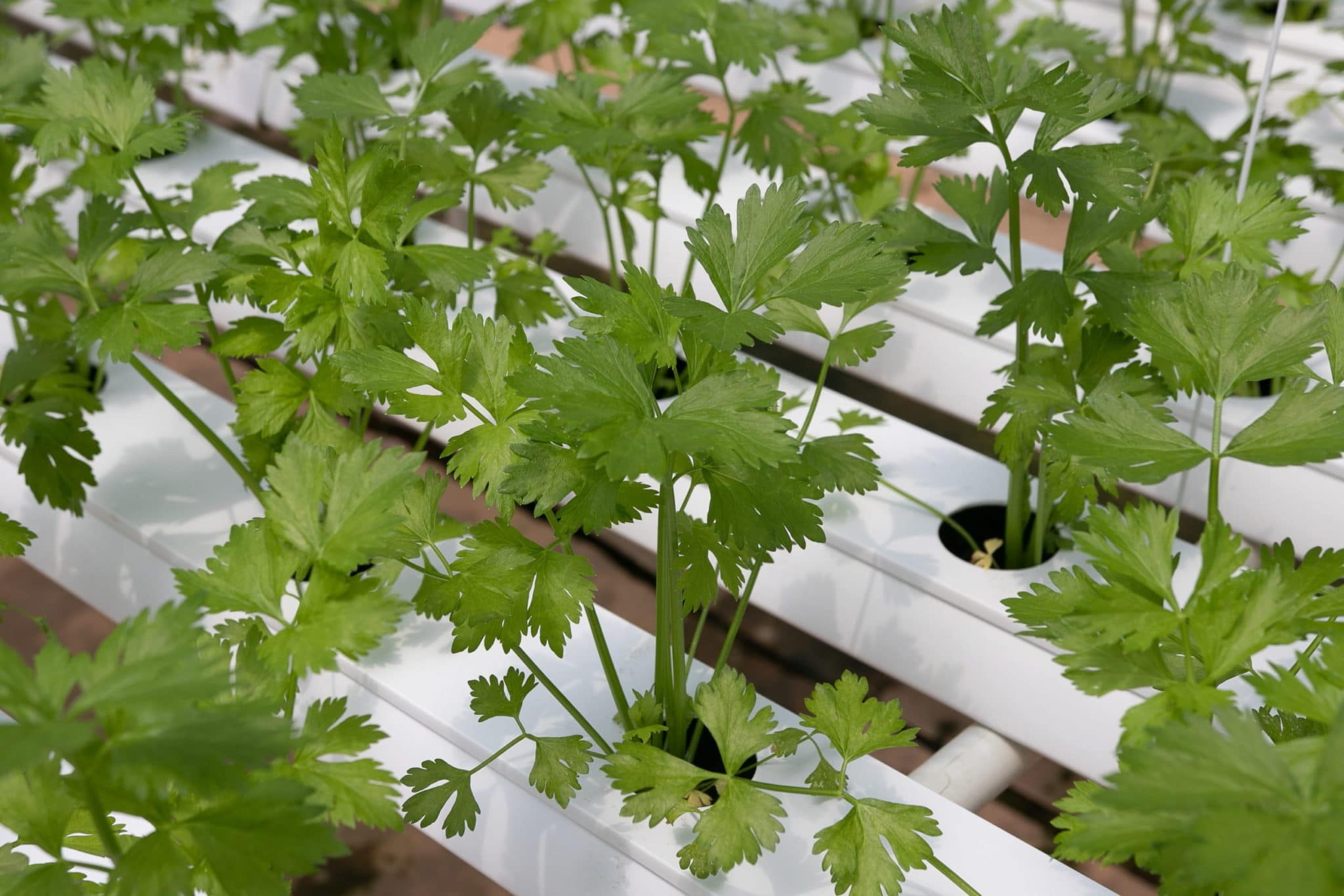If you’re unsure how often you change the water in hydroponics, make it a habit every two to three weeks. First, however, note that your set-up, plant growth, and pH requirements are your considerations for changing your hydroponic system’s water. This might seem tricky, but remember that to reap the benefits of hydroponics, you must accept that the absence of soil and sunlight puts you with more responsibilities to ensure your plants’ success.
Using a hydroponic system, in addition to a greenhouse, makes it possible to grow healthy transplants. Hydroponics and greenhouses allow everyone to have a year-round supply of food, which would be impossible if you’re limited in location and space. However, using this technology includes being diligent throughout the process, significantly how often you’ll change its water.

How Often Do You Change Water In Hydroponics: What To Consider
Bi-weekly changing, but…
As briefly mentioned, you should change your water every two to three weeks. But before you do so, consider reading about the three considerations since they influence the frequency of changing the water. You might think that changing water in hydroponics is as simple as dumping and replacing it bi-weekly, but this is just based on one factor alone.
This bi-weekly schedule recommendation is because, within two weeks, the volume of the water in the tank will be equal to the importance of the added top-off water. Changing bi-weekly will prevent hydroponics from over-accumulate nutrients and also prevent bacteria and fungal growth. However, this frequency may vary based on your set-up, plant growth, and pH level.
Hydroponic Set-up
According to the University of Massachusetts Amherst, one of the disadvantages of hydroponics is that you must have technical skills. After all, hydroponics is far from traditional farming, and you’ll be relying on technology and background in chemical and plant production for it to work successfully—this is one of the reasons why your set-up will affect the frequency of changing your water.
For example, your set-up might lose water faster from evaporation and plant usage. This is because your system might have many light, heat, or water reservoirs close to these sources. Additionally, using many plants means higher water usage, so changing the water might be more frequent than the base recommendation.
Plant growth
More than having many plants, the rate of your plants’ growth also dictates how often you’ll change the water in hydroponics. The high yield and short growing time advantages in hydroponics also mean that your plants’ efficient evaporation and transpiration will consume the water in the reservoir. Therefore, you must prevent water loss by adding periodically to maintain the water volume.
You might have read the term “topping off” earlier, which means adding water to achieve a consistent level. You do this gradually to maintain the nutrients without having them too concentrated in the solution. Compared to changing water, topping off can be as frequent as every two days or every day.
pH requirements
One adjusts the hydroponic pH levels using products and additives that raise and lower them to achieve the recommended level. It’s also normal for the level to fluctuate when you change the solution, but it shall rise to the right level; however, if you notice that it’s consistently out of range, you need to change your water thoroughly.
After all, pH additives are not meant to solve the fluctuations completely. And for your plants to grow well, the pH should be at the recommended levels. For a long-term solution, change your water out.
How To Change Water In Hydroponics
The frequency of changing the water in hydroponics is crucial, but so is your method’s correctness for the changing itself. To put it simply, you’ll change water both by topping off and completely changing it. These two methods are essential, and they should be regular parts of your routines.
Earlier, this article discussed topping off your water reservoir. You top off the reservoir with water from the name itself to maintain its volume and prevent it from being too concentrated. Topping off can be daily or weekly, but the emphasis is necessary on measuring how much you add so you’ll know when it’s time to change your water thoroughly.
On the contrary, changing the water ultimately would not be as frequent. And the reason why you need to note the volume of the water you topped off is that if they reach half of your total reservoir volume, then it’s time to change the water in your reservoir completely.
Conclusion
The hydroponic system, combined with greenhouse gardening, can open gardeners’ opportunities to have food year-round without space and location limitations. However, one of its responsibilities that you must learn is how often do you change the water in hydroponics. Generally, you do this on a bi-weekly basis, and topping off the water can be weekly or daily.
However, your setup, plant growth, and pH requirements also affect how often you need to change your water. These factors may seem overwhelming to learn, but when you’re growing in hydroponics, you will surely be familiar with them anyway. Note how much you top your reservoir, and this will also let you know when it’s time to change the water completely.

I just purchased your hydroponics book. I hope it will help me with some questions. I plan to use two 8 foot PVC pipes to make my system. I am trying to figure out what size pump to use. how much water (GPH) will need to flow past the roots? That figure will determine the pump size and the diameter of the tubing. I thought of pumping the water into one PVC pipe and connect it to the other so the water can run back through the second pipe and back to the tank. Is that OK? Thanks for the help. I look forward to reading your book.
That should work just fine, Robert! I would highly appreciate if you try it and share your experience here with us.